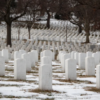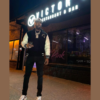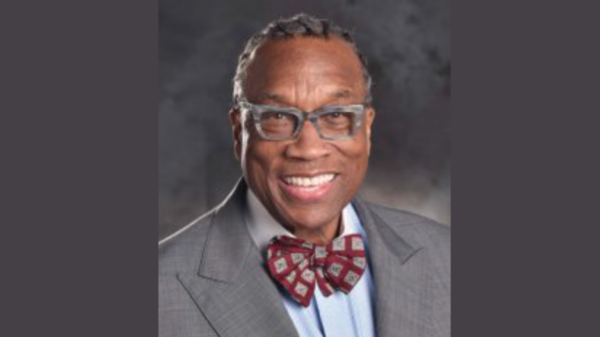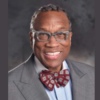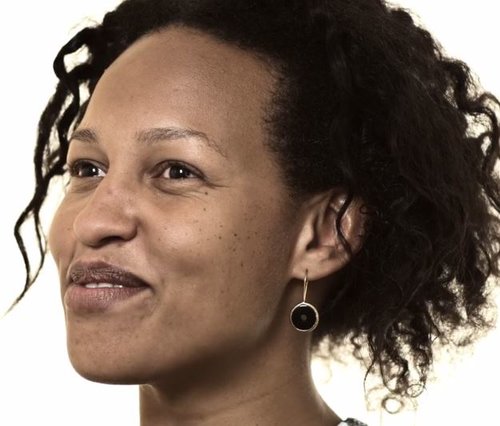
A native of West Philadelphia, Dr. Michelle E. Morse is an accomplished innovator of health policy, practices and procedures that target structural racism in medicine. She is committed to achieving health equity through global solidarity, social medicine and anti-racism education, and activism. Working with other physicians at Brigham and Women’s Hospital in Boston, Dr. Morse spearheaded a study determining that Black and Hispanic heart failure patients treated in the hospital’s emergency department were disproportionately sent to general admissions rather than the specialty cardiology unit where there are better patient outcomes. In response, her leadership led to the creation of the Healing ARC intervention and framework, a blueprint for race-conscious interventions that can eliminate racism in patient care. In February 2021, Dr. Morse became Chief Medical Officer and a Deputy Commissioner at New York City Department of Health and Mental Hygiene. Among her other duties, Dr Morse coordinates a coalition of NYC health care providers examining the use of race and ethnicity in clinical algorithms that can play central roles in patient care decisions, even though their race modifiers are frequently based on debunked, racist theories that leave patients with delayed and compromised treatment. A co-founder of EqualHealth, and an Assistant Professor at Harvard Medical School, Dr. Morse co-led creation of the Healing ARC campaign, which is raising awareness of race-conscious interventions in Massachusetts and across the country. Dr. Morse recently conducted a candid interview the Healing ARC Campaign newsletter.
Why did you become a doctor?
I love that question. It’s one of my favorite questions and for me it wasn’t a life altering experience necessarily. A big part of it is the fact that my mother, Debbie, is a public school teacher and always ensured that we were raised not only to be proud of being Black, but also being very, very community engaged and civically engaged and very conscious of the needs in our community. So those values were there from the beginning. And my mom is very much a people person, which is why I also love being around people. And, I just love, absolutely love, math, science, chemistry, calculus…all of the super wonky, nerdy topics that end up being a gateway to becoming a physician. Growing up, I had a Black woman, pediatrician. And so being a doctor always felt within the realm of possibility. As I started to shadow doctors and understand the reality of it, I absolutely loved it.
Where did you grow up?
I grew up in Philadelphia. West Philly. I went to public schools from kindergarten to 12th grade. My mom is a public school teacher, and it was important to her that I went to public schools. I was raised by my mom, but I am also connected to my Dad’s side of the family. His family runs funeral homes. My Dad’s a third generation running a family funeral home business.
Where did you go to college?
For undergraduate, I went to the University of Virginia and majored in French. As a Black student at a predominantly white university, it was quite an experience. I always loved French. I took a lot of French classes in high school, and I loved my French teacher. So, I was very engaged in French and languages in general. I majored in French thinking I would become a physician who would work in Francophone West Africa. I’ve never ended up doing that. But instead, I spent considerable time living in, and working in Haiti between 2009 and 2020. I lived in Haiti from 2012 until 2015.
What was it like in medical school?
For medical school, I went to the University of Pennsylvania, which is in West Philly. And I was the only med student from West Philly out of 600 med students. That says a lot about Penn and its problems with diversity, equity, and inclusion. At times, it was very painful because many of my classmates and the faculty, the teachers and even nurses and doctors in the hospital, all harbored nasty negative beliefs, discriminatory beliefs, about the people of West Philly, which has a large Black population. They usually did not know that I was from West Philly. I can’t repeat the nasty things that were said. I’ve always felt that if Penn had more medical students from West Philly as it should have had, maybe the health outcomes for people there wouldn’t be so bad. You can barely find a Black primary care doctor in West Philly, which is a huge problem. I have a lot of complex feelings about Penn. On the one hand, it was my entree into global health. I got to take a year off between my second and third year of medical school to live in Botswana for the year. And that’s when I became a student activist in the AIDS movement. That’s when I really set my path towards global health equity.
When did you first encounter racism in medicine?
Definitely as a first-year medical student at Penn. I was twenty-one and went straight from undergrad to medical school. There was this very memorable moment when some of the nurses in the emergency department at Penn disparaged a patient, saying, “Oh, this one has West Philadelphia wig syndrome.” That was just disgusting. It was just one of those nasty, derogatory, racist things that they would say. The health workers struggled with their own secondary trauma from the challenges and hard works. Unfortunately, their frustrations manifest in racist comments directed at Black and Brown patients. It’s definitely hard work, but it’s obviously quite racist and pretty nasty. Another troubling thing was hearing patients derided as having “poor protoplasm” or patient with “PPP.” This is the way that doctors and nurses used racist framing to denigrate Black or Hispanic patients struggling with addiction or complex medical problems. It was their way of blaming and stigmatizing the patients.
How did this impact you?
It had an enormous impact. It became very clear, very quickly that to be a Black woman doctor is just a very unique thing. And it’s in a way both a gift and a curse. I am incredibly honored to be able to serve Black people in particular, but all marginalized communities. This is the honor of a lifetime. And it’s definitely my calling. This is the job I was born to do. So, I feel very strongly about that. The curse, of course, is that the darts that come my way are pretty ugly. It is the experience of being undervalued, assumed to not be as competent, assumed to be less than, assumed not to be the doctor. I think the undervalued, underappreciated thing is really probably one of the most challenging parts. It’s been a journey and you really need community to be able to navigate it. Because otherwise it becomes just too much. Just too painful. I have several friends that I’ve known since I was 10 years old in Philly that I went to public school with, but most of my other friends are Black women physicians. We just understand each other in a way that I think helps us all get through the challenges.
Has this driven you to create “safe” communities for yourself?
Definitely. I think it’s a big part of the reason I loved working in Haiti so much. I went to Haiti in 2009 for the first time as a second year internal medicine resident with Partners in Health, and I absolutely fell in love with working there. I was in clinics in rural Haiti with hundreds of patients who had never seen a doctor. I was able to speak French with a lot of colleagues while collaborating with the Black community, health workers, Black nurses, Black doctors. It was so affirming. That was such an important experience for me. It’s probably part of the reason I was so drawn to Haiti in addition to having studied the Haitian Revolution in college and knowing the history of Haiti. And, in 2010 Equal Health was launched after the earthquake in Haiti to be part of the solution to rebuilding the healthcare and medical education system in the country for the long term. My experiences definitely led me to finding power and strength through the communities we build. I associate with people who see the power of community and a shared analysis. We’re all dissatisfied with systems as they are, whether the system is healthcare, social services or something else – it’s infected with structural racism. We keep each other hopeful and on fire and inspired, about the fact that change is possible because we have this shared analysis, this shared dissatisfaction, and more than anything, our relationships and community.
When did you first start thinking about the healing arc?
We started thinking about a solution right from the beginning after recognizing there was a problem with Black and Hispanic heart failure patients not being admitted to cardiology unit at Brigham’s. Once we looked at the data over the prior decade, it was very clear we were seeing institutional racism at work. One of the challenges is that solutions to inequities almost never actually center the community that was harmed. We were committed to changing that. We wanted the Black and Hispanic communities centered in the solution. We were also doing this at the height of the Black Lives Matter movement when conversations about restorative justice and race consciousness were a major part of the public discourse. I was engaged with the Lancet Commission for Reparations and Redistributive Justice so we were thinking about reparations, about restorative justice, about public health, critical race practices and all these things were centered on race consciousness.
Why are race-conscious approaches necessary?
The empirical evidence shows that the strategies and approaches we have used to counter structural racism in medicine and other fields is not working. And what has been tried are colorblind approaches. It is the 20th anniversary of the Institute of Medicine’s groundbreaking report, Unequal Treatment: Confronting Racial and Ethnic Disparities in Health Care. In more than 700 pages, every inequity, racial and otherwise, are documented. And, 20 years later, almost nothing has changed. What has happened is a lot of studying of racial and other health inequities and almost no real action. No targeted action to ensure that the communities being disinvested and marginalized for generations actually get some restitution and the inequities are addressed. A race conscious approach is grounded in history. It is critical to understanding the racist history of this country and know the policies, practices and procedures create the social inequities. A hierarchy of human value has been embedded in this country since its origin. We need to ensure that solutions are focused on redressing the racism that has long existed. Let’s not waste time, energy, and resources on general approaches. For instance, in a field like housing. We cannot just increase general access to housing. We must look at the fact that Black people are significantly more likely to be homeless. So, focus on the Black community! We must focus on the demographics that have been historically marginalized. And there is evidence that this works. The American Association of Medical Colleges launched a bold initiative in the 1990s and early 2000s to increase Black and Hispanic medical school students. They weren’t able to continue it longer because of the backlash against affirmative action, but their efforts made a huge difference. Focusing on affirmative action was a race-conscious approach to a longstanding inequity with medical schools. We know it works. There are modeling studies on the impact that race-conscious approaches can have on longstanding inequities. New Zealand is a global model for utilizing reparations to redress historically harmed communities.





